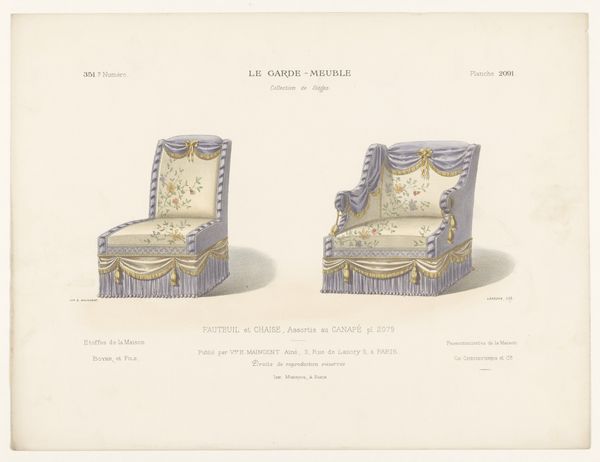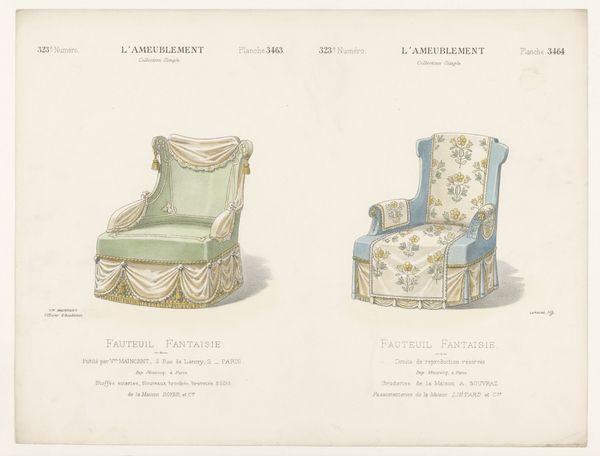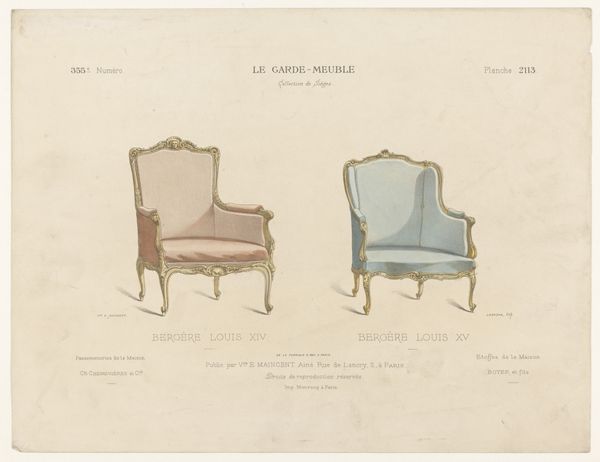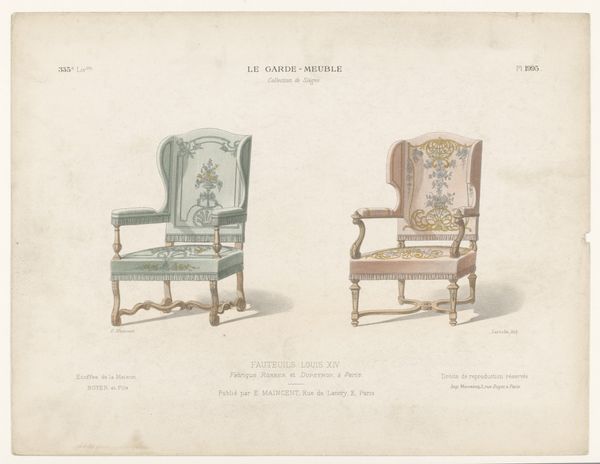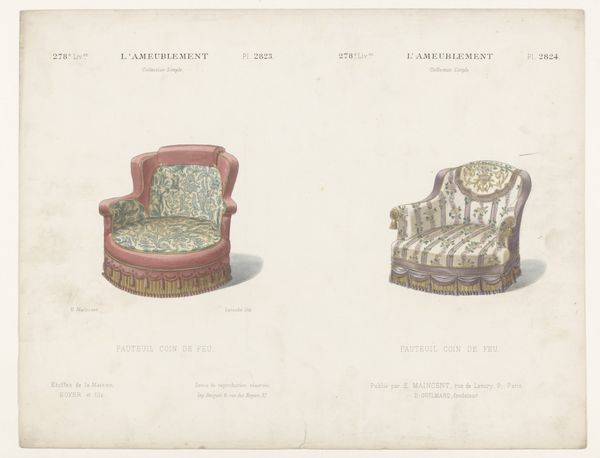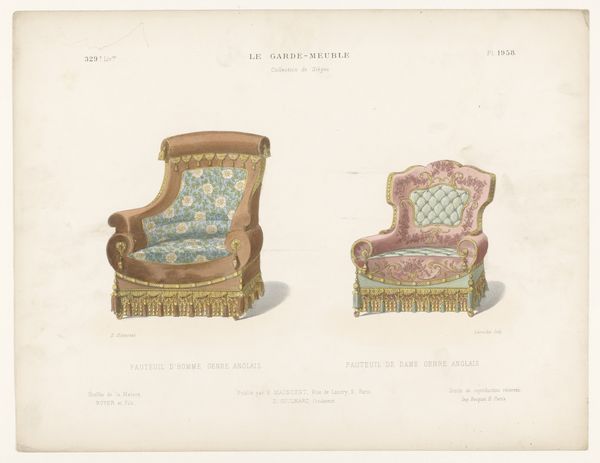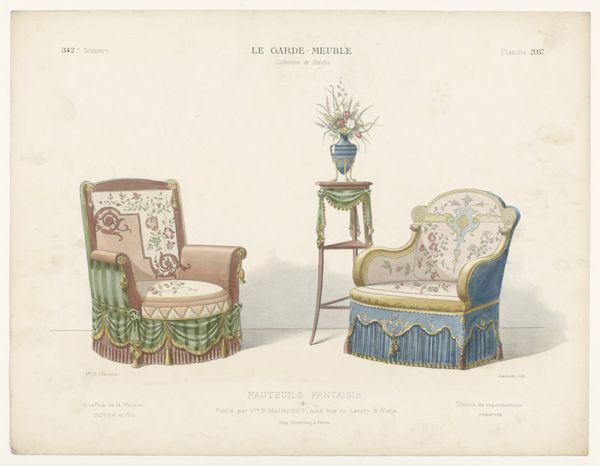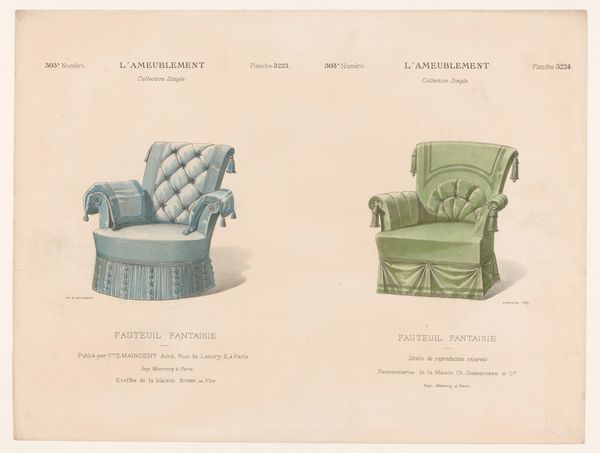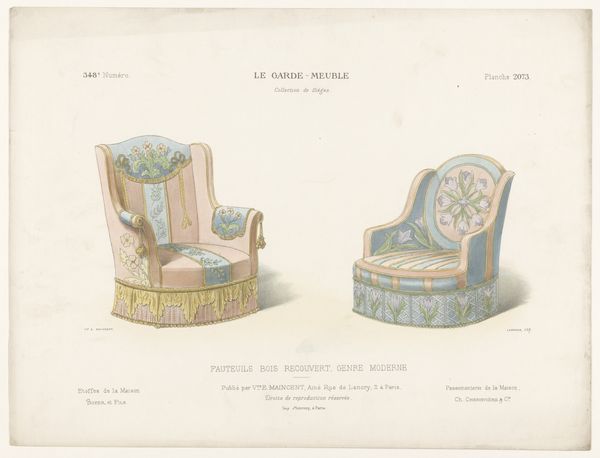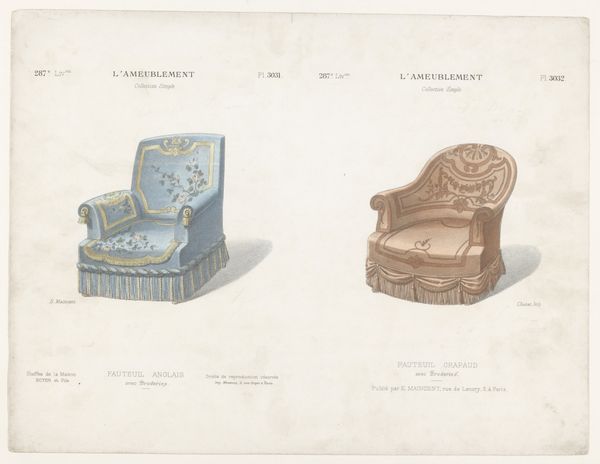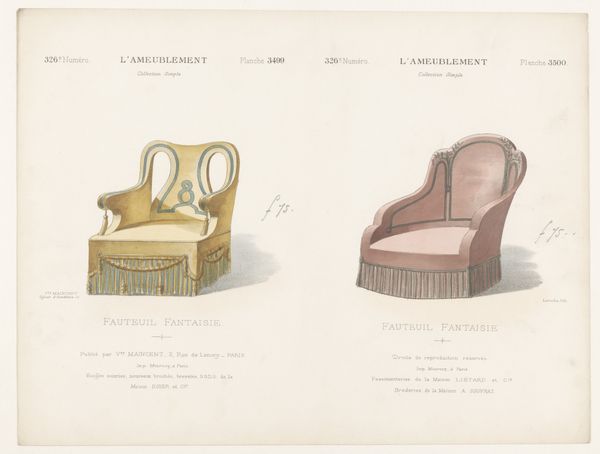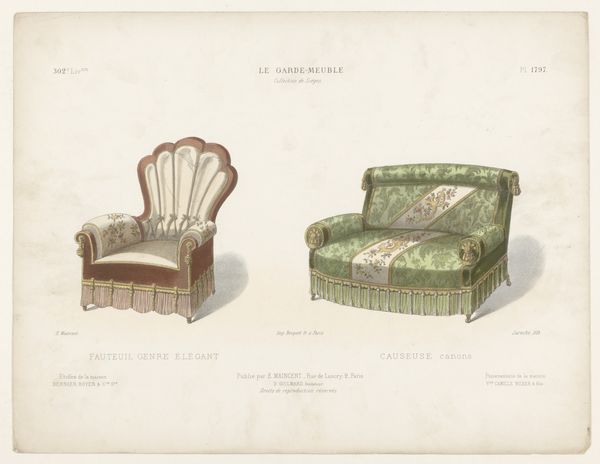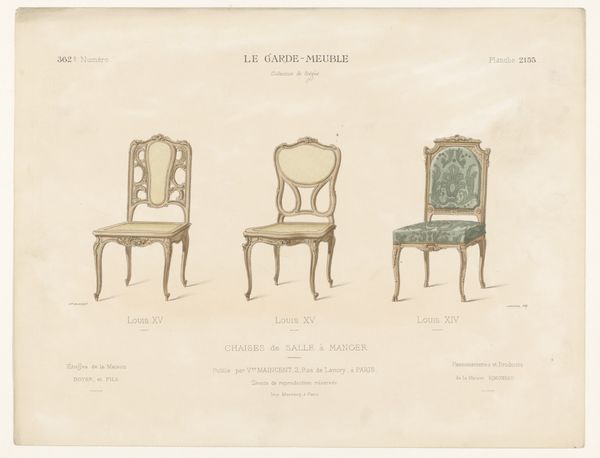
drawing, print
#
drawing
#
art-nouveau
#
16_19th-century
# print
#
decorative-art
Dimensions: height 271 mm, width 359 mm
Copyright: Rijks Museum: Open Domain
Curator: This print, "Twee fauteuils," translating to "Two Armchairs," comes to us from an undetermined hand somewhere between 1895 and 1935, part of a larger compendium. Editor: They're quite fantastical, really, a pastel dreamscape in upholstery! What strikes me most is the almost excessive detailing—the fringes, the floral accents, the way the light seems to catch the fabric. It’s very ornamental. Curator: That ornamentation speaks volumes. Think of the material production required, the weaving, the embroidery… these aren't merely chairs; they represent a culture steeped in consumption and display. The labor behind those details, likely underpaid or exploited, is a critical, yet often overlooked aspect of such design. Editor: Indeed, objects like these served as powerful signifiers of status. Placed within the salon, these "fauteuils fantaisie" weren’t simply for sitting; they performed a crucial role in the theatre of social life. Imagine the drawing rooms where pieces such as these were arranged—each object contributing to the construction of identity and power. Curator: The stylistic features connect strongly with the decorative arts and Art Nouveau, pushing away from strict functionality and leaning toward excess for visual impact. The drawing emphasizes how these furnishings were conceived, probably as objects to trade or to make under strict processes and under whose guidelines? We have names on the prints themselves of retailers rather than manufacturers. It emphasizes distribution rather than artistic craftsmanship. Editor: That perspective really illuminates the politics of imagery at play here. These prints allowed these styles to propagate. This design offered access and appeal across broader demographics, serving almost like advertisements. Disseminating notions of taste, decorum and design from Paris outward to the wider world. Curator: Precisely. The document lays bare systems of exchange and networks of power—forces as crucial to this era’s cultural output as artistic innovation alone. Editor: Examining these decorative drawings lets us analyze this period, unveiling a very different story. It offers access into society's hidden infrastructures, so often lost in traditional histories.
Comments
No comments
Be the first to comment and join the conversation on the ultimate creative platform.

